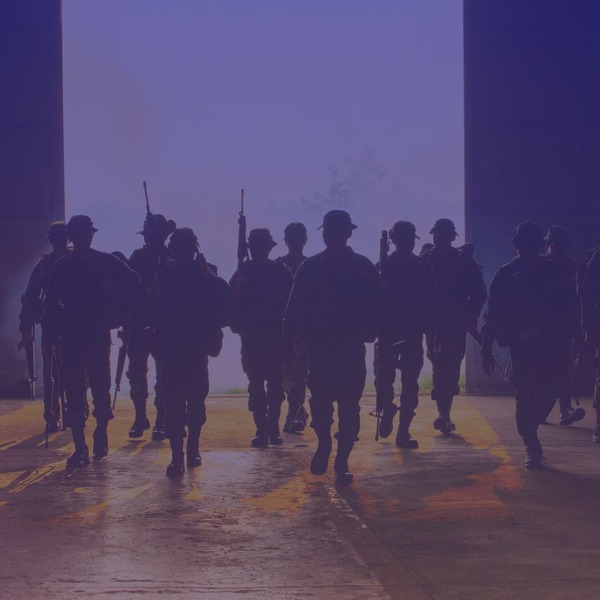
Written by the Working Group on Migration
Introduction
The massive increase in the arrival of migrants to the Canarian coasts has witnessed a wave of racism and xenophobianever seen before.
The Canary Islands faced a similar situation in 2006, when more than 36,000 people, from the West African coast and the Maghreb, reached their seashores. Collaboration between Spanish authorities and Frontex, together with diplomatic agreements between Spain and the countries from which the vessels departed – or through which these people transited – reversed the trend and the Atlantic route was rather inactive for the next decade with less than 1,000 migrants per year.
There was a slight upturn in 2018 and 2019, just a prelude to what would happen in 2020: the Atlantic Route was again sailed by more than 20.000 people[1]. The Canaries are presented as a direct and short route to Europe, despite its immeasurable dangers.
In this context, the rumours, fake news and hoaxes gradually permeated Canarian society. Two positions can be roughly distinguished: those who, although critical of the government, showed sympathy for migrants, and those who blamed them and demanded their immediate deportation. The Spanish Ombudsman[2] and several human rights associations[3] have recently pointed out the numerous rights violations suffered by migrants and the worrying xenophobic tendencies.
With the benefit of hindsight, one wonders why the Canary Islands -an example of coexistence between different nationalities and cultures- were the perfect breeding ground for xenophobia and racism.
Political Instability and Economic Crisis in the Context of Covid-19
Political instability has been a feature of Spanish politics during the last few years. The need to form coalitions between parties with very different political agendas, the resurgence of the extreme right, corruption, and the lack of public confidence, have all been aggravated by the pandemic.
The humanitarian crisis in the Canary Islands region has been used as a political weapon by local, regional and national authorities. Competencies in relation to migration belong to three Spanish government ministries (Interior, Defence and Migration), which in turn have ceded competencies to regional institutions. Together with the lack of coordination between institutions, this creates uncertainty as to who is responsible in each case and excessively lengthy procedures.
The best example of it is the so-called “dock of shame,”[4] a macro-camp set up on the Arguineguín dock, the main port of Maritime Rescue operations in the Canary Islands, where hundreds of people who had been rescued were forced to stay for more than 3 months. The absence of inter-ministerial cooperation hindered the quest of a dignified place for all these people.
The overcrowded and unsanitary conditions experienced in Arguineguín were noted by Human Rights Watch, one of the few independent observers allowed access to the pier[5]. According to the NGO, journalists, photographers, and TV cameras were prevented from entering the dock.
Although it was never certain if the Atlantic route would be used again, many of the facilities in 2006 were dismantled and consequently did not meet the minimum requirements to serve as accommodation. The lack of facilities forced the administration to use hotels to provide shelter for migrants, a decision that attracted media attention and divided public opinion[6].
Meanwhile, the Canarian economy – already quite weak in comparison with other Spanish regions – has been hit hard by the pandemic. Its heavy dependence on international tourism has led to a major downturn, reaching an unemployment rate of 25.22% – the highest in Spain – while 35% of the population is at risk of poverty or exclusion[7].
Border closure policies have resulted in the loss of millions of euros and the economy is likely to take several years to recover. After losing their jobs, families and individuals who had some economic stability before the pandemic are now finding it difficult to make ends meet.
This harsh economic framework and the lack of information are key to a proper understanding of why migrants have become a convenient scapegoat.
Hate Speech and the Media
Words such as ” invasion”[8] and “military-age youth”[9] have been used by the far right and racist movements to distort reality and dehumanise migrants. Not only have the use of hyperbole and war language served this purpose, but hoaxes have also been spread through social networks and instant messaging applications, making it difficult for authorities to investigate hate crimes.
Furthermore, unproven phenomena like the “pull factor”[10], have also justified the violation of rights suffered by both migrants and asylum seekers, who have been blocked on the islands and are unable to move freely through Spanish territory. In this sense, the pandemic has played a dual role: (i) as an excuse to limit freedom of movement; and (ii) as an impediment to repatriation, since many borders remain closed.
On the other hand, although these people are considered merely economic migrants, it is difficult to determine the causes of the increased influx of people on this route. Economic factors play a major role, and are also compounded by social considerations[11], as well as the existing structuralised inequality, the lack of access to education and healthcare, and even terrorism – not to mention the early effects of climate change.
The role of the media has been decisive and, in some cases, questionable. In December 2020, Red Acoge presented a report, analysing the treatment of information in the media related to migratory movements in Spain[12]. It exposedthe sensationalist and alarmist treatment in the news, associating the phenomena with terms such as “wave”, “avalanche”, “collapse” or “assault”.
In addition, decontextualized images are used as cover pages and the excessive use of adjectives as nouns builds anatmosphere of indifference and dehumanisation. For instance: the use of the word “person” is avoided and terms such as “illegal”, “undocumented” and “MENAS” -acronym for unaccompanied minors- are used, as well as references to their possible origin.
Despite coverage of the migration phenomenon affected by the authorities[13], the work of some photographers and journalists have been fundamental in reporting what has happened and given a voice to the protagonists of the migration issue. Moreover, platforms dedicated to debunking hoaxes, such as “Maldita Migración”, have served as a tool to identify false information.
Perception of the Migratory Phenomenon and Response of Canarian Society
The report entitled “The perception of immigration in Tenerife”[14] provides a detailed overview of the causes of xenophobia, with results that can be extrapolated to the rest of the islands. As a particularly revealing fact, even before the humanitarian crisis of 2020, 51.9% of respondents born in the Canary Islands, perceived immigration as ‘excessive’.
However, only 13.41% of the population of the Canary Islands in 2020 is foreign, slightly higher than the Spanish average. Most of the foreign population in the Canary Islands is of European origin (57.10%), with Italians, British and Germans being the most frequent nationalities. Around 25.77% come from the American continent, especially Cubans, Colombians, and Venezuelans. The African community makes up 10% of the foreign population, the vast majority being Moroccan, followed by small groups of Senegalese, Algerians and Mauritanians, among other nationalities[15].
Moreover, the study shows that the migration effects perceived as negative are related to the labour market, security, and problems of coexistence. It is also remarkable that among African migrants, it is the North Africans who are perceived most negatively. This is confirmed by other studies, such as a report published by the Spanish Council for the Elimination of Racial or Ethnic Discrimination in 2020, which states that 64% of the people interviewed associated the Maghrebi community with negative adjectives[16].
As for the reactions of the Canarian population, they are quite polarised. On the one hand, especially in the most vulnerable neighbourhoods -which sometimes coincide with those where migrant’s reception centres are located- there have been violent attacks demonstrations against ‘illegal immigration’ with slogans such as “It’s not xenophobia, it’s civility”. Accusations of an increase in crime by migrants led the Canarian government delegate to call a press conference to offer data that refuted such allegations[17].
On the other hand, solidarity movements have been gaining ground in response to hate speech. In the space of a few weeks, hundreds of neighbours have come together to meet the needs of migrants on the streets, offering them their homes, food, legal and medical assistance, or translation support, in the absence of institutional response. They demonstrate every time there is a human loss in the Atlantic route and demand accountability from the institutions. It is the most socially conscious side of the citizenry, which advocates for the rights of migrants to be respected.
Conclusions
In light of the above, it is reasonable to assume that existing xenophobia and racist stereotypes were strongly increased by the economic crisis caused by the pandemic, as well as by the lack of political transparency and the dissemination of biased information.
Migratory movements, especially maritime arrivals, are the subject of much media attention and good practices in communicating these events are often lacking. On top of that, information reporting is severely hindered, thus the real conditions of these people are not publicly available.
Therefore, anti-racist initiatives such as the one of the Cabildo of Tenerife, under the slogan “Migrations: +humanity, -hoaxes”[18], are very necessary to improve direct communication with citizens and to curb further xenophobic and racist outbreaks, as this humanitarian crisis unfortunately looks set to continue in 2021.
[1] Informes sobre inmigración irregular. Ministry of the Interior of Spain. http://www.interior.gob.es/prensa/balances-e-informes/2020
[2] “La Migración en Canarias.” Spanish Ombudsman, March 3, 2021. https://www.defensordelpueblo.es/wp-content/uploads/2021/03/INFORME_Canarias.pdf
[3] “Vulneraciones de derechos humanos en la Frontera Sur: Canarias y Melilla” Irídia, 2021.
“#aISLAdas”: Petition of the Spanish Commission for Refugee Aid to the Spanish Government for an agile and transparent transfer policy from the Canary Islands to the Spanish mainland https://www.cear.es/aisladas/
“Spain: Respect Rights of People Arriving by Sea to Canary Islands.” Human Rights Watch, November 11, 2020.
https://www.hrw.org/news/2020/11/11/spain-respect-rights-people-arriving-sea-canary-islands
“With the forgotten migrants of the Canary Islands”, EuroMed Rights.
https://euromedrights.org/canaries-report/
[4] MacGregor, M., “Canary Islands: Army builds camp for migrants stranded on dock”, Info Migrants, November 13, 2020.
https://www.infomigrants.net/en/post/28519/canary-islands-army-builds-camp-for-migrants-stranded-on-dock
[5] See note 3.
[6] Wolter, M., Bathke, B., “Migration on the Canary Islands: A convenient scapegoat for social problems (Part I)”, Info Migrants, December 4, 2020.
https://www.infomigrants.net/en/post/28929/migration-on-the-canary-islands-a-convenient-scapegoat-for-social-problems-part-i
[7] Data from the Spanish National Statistics Institute as of 14 March 2021. https://www.ine.es/index.htm
[8] Parliamentary questions to the Commission by Jorge Buxadé Villalba MEP, member of VOX, January 20, 2021. https://www.europarl.europa.eu/doceo/document/E-9-2021-000349_EN.html
[9] Intervention by Jorge Buxadé Villalba at the European Parliament, January 19, 2021.
https://www.europarl.europa.eu/doceo/document/CRE-9-2021-01-19-INT-2-126-0000_EN.html
[10] Mayblin, Lucy. “Op-ed: Pull Factors – The Myth That Never Dies…” European Council on Refugees”, March 2019.https://www.ecre.org/op-ed-pull-factors-the-myth-that-never-dies/
[11] Garver-Affeldt, J., Seaman, M., “A Gateway Re-opens: the growing popularity of the Atlantic route, as told by those who risk it”, Mixed Migration Centre, February, 2021.
https://mixedmigration.org/resource/a-gateway-re-opens/
[12] “Informe Inmigracionalismo 8.” Red Acoge, 2020. https://inmigracionalismo.es/sdm_downloads/informe-inmigracionalismo-2020/
[13] “El 86% de los puertos españoles ponen trabas a la prensa durante la llegada de migrantes”, Entre Fronteras, March 15, 2021.
https://www.youtube.com/watch?v=Mo61YdUuB94&ab_channel=EntreFronterascom
[14] Buraschi, Daniel & Godenau, Dirk. La percepción de la inmigración en Tenerife, 2020.
https://www.researchgate.net/publication/346017812_Daniel_Buraschi_y_Dirk_Godenau_coords_La_percepcion_de_la_inmigracion_en_Tenerife
[15] Data from the Spanish National Statistics Institute as of 14 March 2021. https://www.ine.es/index.htm
[16] “Percepción de la discriminación por origen racial o étnico por parte de sus potenciales víctimas en 2020”, Spanish Council for the Elimination of Racial or Ethnic Discrimination, 2020. https://igualdadynodiscriminacion.igualdad.gob.es/destacados/estudiopercepcion.htm
[17] Statements made at a press conference, February 4, 2021. https://www.mptfp.gob.es/portal/delegaciones_gobierno/delegaciones/canarias/actualidad/notas_de_prensa/notas/2021/02/2021-02-04.html
[18] https://www.ull.es/portal/noticias/2021/juntas-en-la-misma-direccion-lanza-la-campana-migraciones-humanidad-bulos/

 Is EU citizenship for sale – or for keeps? A critical analysis of the CJEU’s Golden Visa ruling.
Is EU citizenship for sale – or for keeps? A critical analysis of the CJEU’s Golden Visa ruling.  The European Union in Space: From exploration and innovation to security and autonomy
The European Union in Space: From exploration and innovation to security and autonomy  The Rise of the Right: The Threat Right-Wing Extremism Poses to Women and Feminist Efforts in Germany
The Rise of the Right: The Threat Right-Wing Extremism Poses to Women and Feminist Efforts in Germany  The silent shield – how special operations safeguard the global supply chain
The silent shield – how special operations safeguard the global supply chain 


